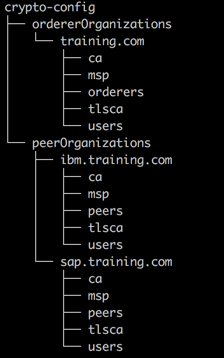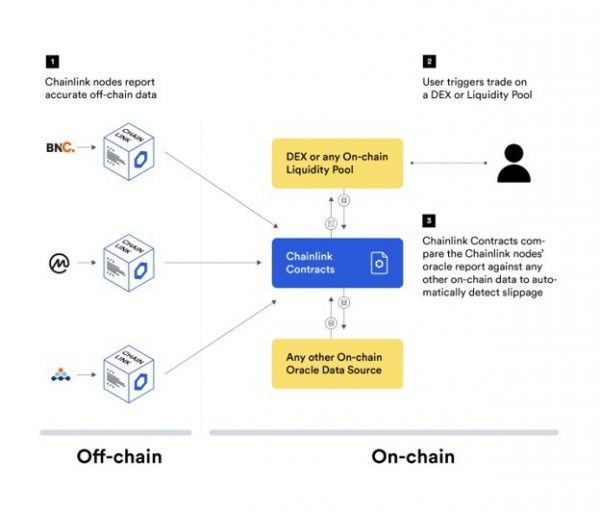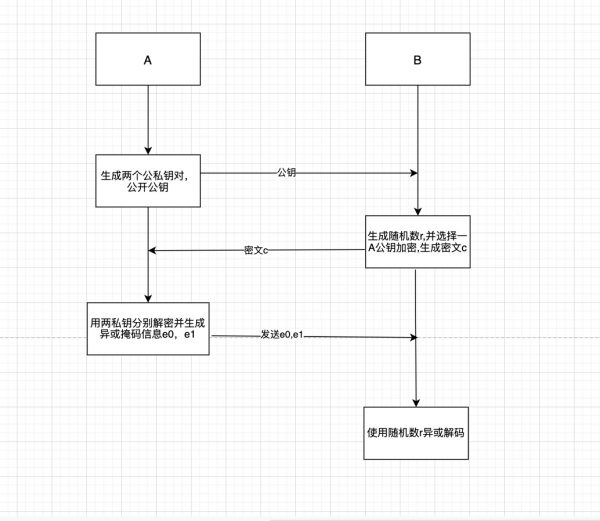智能合约最佳实践 之 Solidity 编码规范
每一门语言都有其相应的编码规范, Solidity 也一样, 下面官方推荐的规范及我的总结,供大家参考,希望可以帮助大家写出更好规范的智能合约。
每一门语言都有其相应的编码规范, Solidity 也一样, 下面官方推荐的规范及我的总结,供大家参考,希望可以帮助大家写出更好规范的智能合约。 ## 命名规范 ### 避免使用 小写的l,大写的I,大写的O 应该避免在命名中单独出现,因为很容易产生混淆。 ### 合约、库、事件、枚举及结构体命名 合约、库、事件及结构体命名应该使用单词首字母大写的方式,这个方式也称为:帕斯卡命名法或大驼峰式命名法,比如:SimpleToken, SmartBank, CertificateHashRepository,Player。 ### 函数、参数、变量及修饰器 函数、参数、变量及修饰器应该使用首单词小写后面单词大写的方式,这个方式也称为:(小)驼峰式命名法,是一种混合大小写的方式,如: * 函数名应该如:getBalance,transfer,verifyOwner,addMember。 * 参数和变量应该如:initialSupply,senderAddress,account,isPreSale。 * 修饰器应该如:onlyAfter,onlyOwner。 ## 代码格式相关 ### 缩进 使用空格(spaces)而不是Tab, 缩进应该是4个空格 ### 空行 合约之间应该有空行,例如: ```js contract A { ... } contract B { ... } contract C { ... } ``` 而不是使用: ```js contract A { ... } contract B { ... } contract C { ... } ``` * 函数之间应该有空行,例如: ```js contract A { function spam() public { ... } function ham() public { ... } } ``` 没有实现的话,空行可以省去,如: ```js contract A { function spam() public; function ham() public; } ``` 而不是: ```js contract A { function spam() public { ... } function ham() public { ... } } ``` ### 左括号应该跟定义在一行 定义包括合约定义、函数定义、库定义、结构体定义等等,例如推荐使用: ```js contract Coin { struct Bank { address owner; uint balance; } } ``` 而不是: ```js contract Coin { struct Bank { address owner; uint balance; } } ``` ### 左括号应该跟条件控制在一行 在使用if, else, while, for 时,推荐的写法是: ```js if (...) { ... } for (...) { ... } ``` 而不是: ```js if (...) { ... } while(...){ } for (...) { ...;} ``` 如果控制语句内只有一行,括号可省略,如: ```js if (x < 10) x += 1; ``` 但像下面一个语句有多方就不能省略,如: ```js if (x < 10) someArray.push(Coin({ name: 'spam', value: 42 })); ``` ### 表达式内的空格 * 一个单行的表达里,在小括号、中括号、大括号里应该避免不必要的空格,例如推荐使用: ```js spam(ham[1], Coin({name: "ham"})); ``` 而不是: ```js spam( ham[ 1 ], Coin( { name: "ham" } ) ); ``` 有一种例外是,结尾的括号跟在结束的分号后面, 应该加一个空格,如下面的方式也是推荐的: ```js function singleLine() public { spam(); } ``` * 分号;前不应该有空格,例如推荐使用: ```js function spam(uint i, Coin coin) public; ``` 而不是: ```js function spam(uint i , Coin coin) public ; ``` * 不要为对齐添加不必要的空格,例如推荐使用: ```js x = 1; y = 2; long_variable = 3; ``` 而不是: ```js x = 1; y = 2; long_variable = 3; ``` * 回退函数不应该有空格,例如推荐使用: ```js function() public { ... } ``` 而不是: ```js function () public { ... } ``` ### 控制每一行长度 每行不应该太长,最好在79(或99)个字符以内,函数的参数应该是单独的行,且只有一个缩进,例如推荐的方式是: ```js thisFunctionCallIsReallyLong( longArgument1, longArgument2, longArgument3 ); ``` 而不是: ```js thisFunctionCallIsReallyLong(longArgument1, longArgument2, longArgument3 ); thisFunctionCallIsReallyLong(longArgument1, longArgument2, longArgument3 ); thisFunctionCallIsReallyLong( longArgument1, longArgument2, longArgument3 ); thisFunctionCallIsReallyLong( longArgument1, longArgument2, longArgument3 ); thisFunctionCallIsReallyLong( longArgument1, longArgument2, longArgument3); ``` 对应的赋值语句应该是这样写: ```js thisIsALongNestedMapping[being][set][to_some_value] = someFunction( argument1, argument2, argument3, argument4 ); ``` 而不是: ```js thisIsALongNestedMapping[being][set][to_some_value] = someFunction(argument1, argument2, argument3, argument4); ``` 事件定义也应该遵循同样的原则,例如应该使用: ```js event LongAndLotsOfArgs( adress sender, adress recipient, uint256 publicKey, uint256 amount, bytes32[] options ); LongAndLotsOfArgs( sender, recipient, publicKey, amount, options ); ``` 而不是: ```js event LongAndLotsOfArgs(adress sender, adress recipient, uint256 publicKey, uint256 amount, bytes32[] options); LongAndLotsOfArgs(sender, recipient, publicKey, amount, options); ``` ### 文件编码格式 推荐使用utf-8 及 ASCII 编码 ### 引入文件应该在最上方 建议使用: ```js import "owned"; contract A { ... } contract B is owned { ... } ``` 而不是: ```js contract A { ... } import "owned"; contract B is owned { ... } ``` ## 函数编写规范 ### 函数的顺序 在编写函数的时候,应该让大家容易找到构造函数,回退函数,官方推荐的的函数顺序是: 1. 构造函数 2. 回退函数 (如果有) 3. 外部函数(external) 4. 公有函数(public) 5. 内部函数(internal) 6. 私有函数(private) 同一类函数时,constant函数放在后面, 例如推荐方式为: ```js contract A { // 构造函数 function A() public { ... } // 回退函数 function() public { ... } // 外部函数 // ... // 带有constant 外部函数 // ... // 公有函数 // ... // 内部函数 // ... // 私有函数 // ... } ``` 而不是下面的函数顺序: ```js contract A { // 外部函数 // ... // 公有函数 // ... // 内部函数 // ... function A() public { ... } function() public { ... } // 私有函数 // ... } ``` ### 明确函数的可见性 所有的函数(包括构造函数)应该在定义的时候明确函数的可见性,例如应该使用: ```js function explicitlyPublic(uint val) public { doSomething(); } ``` 而不是 ```js function implicitlyPublic(uint val) { doSomething(); } ``` ### 可见性应该在修饰符前面 函数的可见性应该写在自定义的函数修饰符前面,例如: ```js function kill() public onlyowner { selfdestruct(owner); } ``` 而不是 ```js function kill() onlyowner public { selfdestruct(owner); } ``` ### 区分函数和事件 为了防止函数和事件(Event)产生混淆,声明一个事件使用大写并加入前缀(可使用LOG)。对于函数, 始终以小写字母开头,构造函数除外。 ```js // 不建议 event Transfer() {} function transfer() {} // 建议 event LogTransfer() {} function transfer() external {} ``` ### 常量 常量应该使用全大写及下划线分割大词的方式,如:MAX_BLOCKS,TOKEN_NAME, CONTRACT_VERSION。 强烈安利一门课程给大家:[深入详解以太坊智能合约语言Solidity](https://ke.qq.com/course/326528?flowToken=1010387) ## 参考文献 [Solidity style-guide](https://solidity.readthedocs.io/en/v0.4.23/style-guide.html) *学习中如遇问题,欢迎到[区块链技术问答](https://learnblockchain.cn/questions)提问,这里有专家为你解惑。 [深入浅出区块链](https://learnblockchain.cn/) - 高质量的区块链技术博客+问答社区,为区块链学习双重助力*
每一门语言都有其相应的编码规范, Solidity 也一样, 下面官方推荐的规范及我的总结,供大家参考,希望可以帮助大家写出更好规范的智能合约。
命名规范
避免使用
小写的l,大写的I,大写的O 应该避免在命名中单独出现,因为很容易产生混淆。
合约、库、事件、枚举及结构体命名
合约、库、事件及结构体命名应该使用单词首字母大写的方式,这个方式也称为:帕斯卡命名法或大驼峰式命名法,比如:SimpleToken, SmartBank, CertificateHashRepository,Player。
函数、参数、变量及修饰器
函数、参数、变量及修饰器应该使用首单词小写后面单词大写的方式,这个方式也称为:(小)驼峰式命名法,是一种混合大小写的方式,如:
- 函数名应该如:getBalance,transfer,verifyOwner,addMember。
- 参数和变量应该如:initialSupply,senderAddress,account,isPreSale。
- 修饰器应该如:onlyAfter,onlyOwner。
代码格式相关
缩进
使用空格(spaces)而不是Tab, 缩进应该是4个空格
空行
合约之间应该有空行,例如:
contract A {
...
}
contract B {
...
}
contract C {
...
}而不是使用:
contract A {
...
}
contract B {
...
}
contract C {
...
}- 函数之间应该有空行,例如:
contract A {
function spam() public {
...
}
function ham() public {
...
}
}没有实现的话,空行可以省去,如:
contract A {
function spam() public;
function ham() public;
}而不是:
contract A {
function spam() public {
...
}
function ham() public {
...
}
}左括号应该跟定义在一行
定义包括合约定义、函数定义、库定义、结构体定义等等,例如推荐使用:
contract Coin {
struct Bank {
address owner;
uint balance;
}
}而不是:
contract Coin
{
struct Bank {
address owner;
uint balance;
}
}左括号应该跟条件控制在一行
在使用if, else, while, for 时,推荐的写法是:
if (...) {
...
}
for (...) {
...
}而不是:
if (...)
{
...
}
while(...){
}
for (...) {
...;}如果控制语句内只有一行,括号可省略,如:
if (x < 10)
x += 1;但像下面一个语句有多方就不能省略,如:
if (x < 10)
someArray.push(Coin({
name: 'spam',
value: 42
}));表达式内的空格
-
一个单行的表达里,在小括号、中括号、大括号里应该避免不必要的空格,例如推荐使用:
spam(ham[1], Coin({name: "ham"}));而不是:
spam( ham[ 1 ], Coin( { name: "ham" } ) );有一种例外是,结尾的括号跟在结束的分号后面, 应该加一个空格,如下面的方式也是推荐的:
function singleLine() public { spam(); } -
分号;前不应该有空格,例如推荐使用:
function spam(uint i, Coin coin) public;而不是:
function spam(uint i , Coin coin) public ; -
不要为对齐添加不必要的空格,例如推荐使用:
x = 1; y = 2; long_variable = 3;而不是:
x = 1; y = 2; long_variable = 3; -
回退函数不应该有空格,例如推荐使用:
function() public { ... }而不是:
function () public { ... }
控制每一行长度
每行不应该太长,最好在79(或99)个字符以内,函数的参数应该是单独的行,且只有一个缩进,例如推荐的方式是:
thisFunctionCallIsReallyLong(
longArgument1,
longArgument2,
longArgument3
);而不是:
thisFunctionCallIsReallyLong(longArgument1,
longArgument2,
longArgument3
);
thisFunctionCallIsReallyLong(longArgument1,
longArgument2,
longArgument3
);
thisFunctionCallIsReallyLong(
longArgument1, longArgument2,
longArgument3
);
thisFunctionCallIsReallyLong(
longArgument1,
longArgument2,
longArgument3
);
thisFunctionCallIsReallyLong(
longArgument1,
longArgument2,
longArgument3);对应的赋值语句应该是这样写:
thisIsALongNestedMapping[being][set][to_some_value] = someFunction(
argument1,
argument2,
argument3,
argument4
);而不是:
thisIsALongNestedMapping[being][set][to_some_value] = someFunction(argument1,
argument2,
argument3,
argument4);事件定义也应该遵循同样的原则,例如应该使用:
event LongAndLotsOfArgs(
adress sender,
adress recipient,
uint256 publicKey,
uint256 amount,
bytes32[] options
);
LongAndLotsOfArgs(
sender,
recipient,
publicKey,
amount,
options
);而不是:
event LongAndLotsOfArgs(adress sender,
adress recipient,
uint256 publicKey,
uint256 amount,
bytes32[] options);
LongAndLotsOfArgs(sender,
recipient,
publicKey,
amount,
options);文件编码格式
推荐使用utf-8 及 ASCII 编码
引入文件应该在最上方
建议使用:
import "owned";
contract A {
...
}
contract B is owned {
...
}而不是:
contract A {
...
}
import "owned";
contract B is owned {
...
}函数编写规范
函数的顺序
在编写函数的时候,应该让大家容易找到构造函数,回退函数,官方推荐的的函数顺序是:
- 构造函数
- 回退函数 (如果有)
- 外部函数(external)
- 公有函数(public)
- 内部函数(internal)
- 私有函数(private)
同一类函数时,constant函数放在后面, 例如推荐方式为:
contract A {
// 构造函数
function A() public {
...
}
// 回退函数
function() public {
...
}
// 外部函数
// ...
// 带有constant 外部函数
// ...
// 公有函数
// ...
// 内部函数
// ...
// 私有函数
// ...
}而不是下面的函数顺序:
contract A {
// 外部函数
// ...
// 公有函数
// ...
// 内部函数
// ...
function A() public {
...
}
function() public {
...
}
// 私有函数
// ...
}明确函数的可见性
所有的函数(包括构造函数)应该在定义的时候明确函数的可见性,例如应该使用:
function explicitlyPublic(uint val) public {
doSomething();
}而不是
function implicitlyPublic(uint val) {
doSomething();
}可见性应该在修饰符前面
函数的可见性应该写在自定义的函数修饰符前面,例如:
function kill() public onlyowner {
selfdestruct(owner);
}而不是
function kill() onlyowner public {
selfdestruct(owner);
}区分函数和事件
为了防止函数和事件(Event)产生混淆,声明一个事件使用大写并加入前缀(可使用LOG)。对于函数, 始终以小写字母开头,构造函数除外。
// 不建议
event Transfer() {}
function transfer() {}
// 建议
event LogTransfer() {}
function transfer() external {}常量
常量应该使用全大写及下划线分割大词的方式,如:MAX_BLOCKS,TOKEN_NAME, CONTRACT_VERSION。
强烈安利一门课程给大家:深入详解以太坊智能合约语言Solidity
参考文献
Solidity style-guide
学习中如遇问题,欢迎到区块链技术问答提问,这里有专家为你解惑。 深入浅出区块链 - 高质量的区块链技术博客+问答社区,为区块链学习双重助力
- 发表于 2018-05-04 10:22
- 阅读 ( 34630 )
- 学分 ( 20 )
- 分类:Solidity








评论